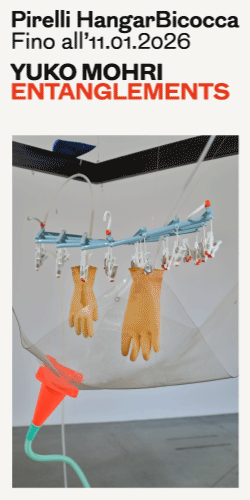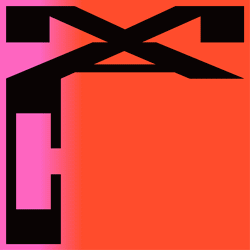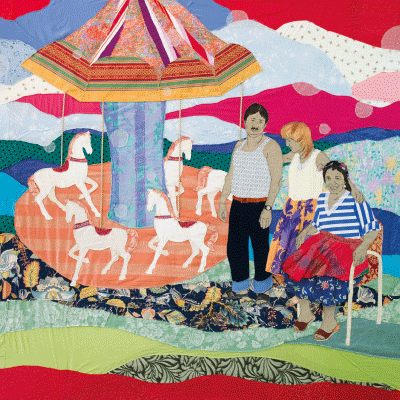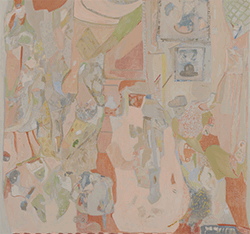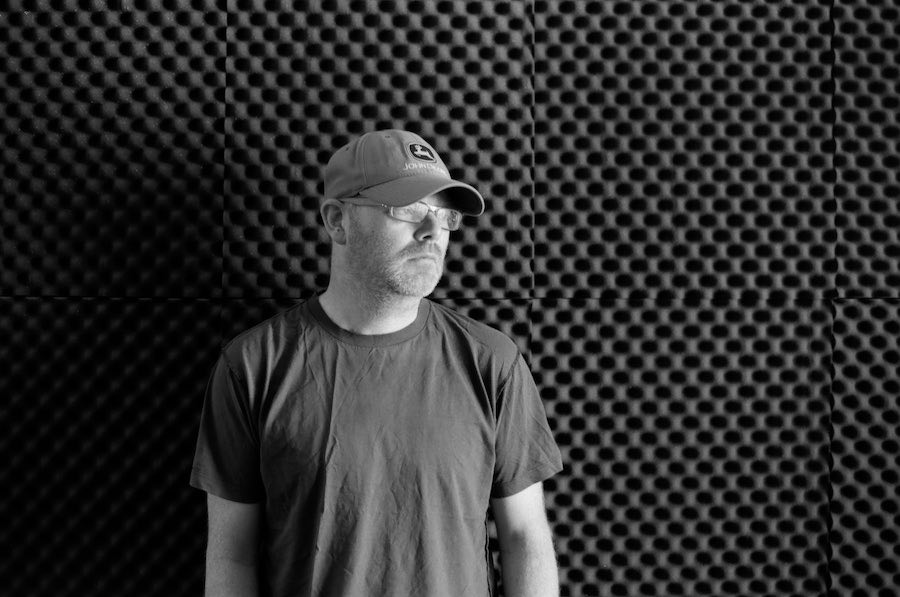
June 13th and 14th Pirelli HangarBicocca presents Against Method, a multidisciplinary project realized by Mark Fell and curated by Pedro Rocha, focused on music, sounds and art. The exhibition’s program foresees musical concerts, a sonorous performance and a conversation inspired by the work of Sheela Gowda.
Radical politics, electronic music and contemporary philosophy are at the core of Mark Fell’s (Rotherham, UK) multidisciplinary and synesthetic production. Fell’s interest in Indian music resides in the particular structure of that music; precisely, in this classic composition the musical elements seem to develop and re-wrap on themselves rather than being constructed on an established score. The political implications inside traditional Indian music – related to the concepts of “casta”, inclusion-exclusion and genders – are also being understood by Mark Fell after two stays in India in the last two years. The project, whose title comes from the philosophical essay Against Method written by Paul Fayerabend in 1975, reflects the multiplicity and complexity intrinsic in Sheela Gowda’s research.
The first evening of Against Method presents interprets from Carnatic music tradition, investigating the interactions among extra-Indians cultures. There will be the violinist Nandini Muthuswamy, the Drumming – Grupo de Percussão, that will execute a piece written by Mark Fell, the electronic composer Nakul Krishnamurthy and at last the electronic musician Rian Treanor in collaboration with the researcher and composer Jan Hendrickse.
The program will be ended by a soloist experimental performance made by Sofia Jernberg.
During the second evening of the event, Mark Fell will present a new work directly dialoguing with Sheela Gowda’s exhibition. Sound and music will be performed inside and outside Gowda’s forms and construction, with the accompaniment of the Italian cellist Sandro Mussida and the Iranian percussionist Mohammad Reza Mortazavi.

On this occasion, ATPdiary has made different questions about the project to the artist Mark Fell.
Valentina Bartalesi: Against Methods appears a heterogeneous and synesthetic project, both immersive and scientific/political (if we look at renowned essay chosen as the title written by Paul Feyerabend in 1975 ). How this project came out?
Mark Fell: The project is a development of my ongoing concerns – not only the formalist issues that seem to be at the forefront of this project (such as the placement of sounds in space, the interaction of objects, their shape, density, colour, etc) but also the critical concerns within which my practice is embedded. I was thinking mainly about how to form a dialogue with Sheela’s work that would avoid a shallow interpretation of her work, and, would not offer a naive western response to it. I think I was invited to take part in the project because I have particular interest is in the political and aesthetics South Indian classical music. But to present this kind of work in the context of Gowda’s exhibition would conflate two very different kinds of activity – nothing more than a meaningless generalisation and stereotyping of an amorphous thing called “Indian culture”. I mean, one would not automatically assume that it is appropriate to present works of English classical music alongside works by a contemporary English artist simply because both are English.
Of course, culture is no such singular whole. Instead we might think of different competing traditions, ideologies, etc that exist in tension with one another. We decided therefore that the works which explore and respond to south indian classical music should happen outside the exhibition, and in this sense form part of a contextual field. This displacement became the starting point around which the rest of the project was formed and helped me find a way to approach the space of the exhibition, and the exhibition.
VB: Why did you opt for that particular text?
MF:Initially i was invited to present a project called “The Carnatic Paradigm” (Carnatic music is the name of South Indian classical music). But for the reasons outlined above the form of this project was drastically reconfigured. So it became necessary to find a new title. Thinking about the project, its complications, issues and challenges, I think what i like about the text is the suggestion that we reject a methodological monism – that we reject the idea that knowledge, progress, discover always happens in the same way. This I felt was some point of commonality between Gowda’s practice and my own: that the work happens in different ways at different times; it comes from different places and processes. In this sense I liked the idea of rephrasing “Against Method” as “Against Orthodoxy” – to remind that we often follow unorthodox and multiple paths.
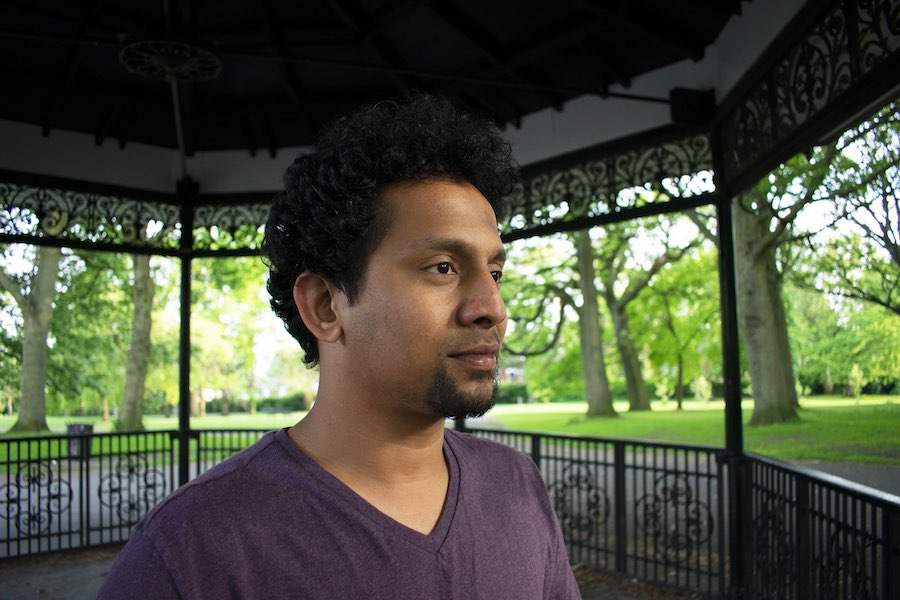
VB: Culture and Subculture are nodal themes inside contemporary art practice. Materials, wastes, sounds, noise mappings, abstract or concrete spaces (such as the exhibition one for example) have an evocative and complex social meaning. What are the connections between your poetic and the one of Sheela Gowda? How was born your interest in Indian music and culture?
MF: Actually I found many points of contact between Gowda’s work and my own. In particular we might say that her work establishes an interchange between Western modernism and her own heritage. And I felt a very strong affinity with this, as it is very close to my own practice – especially the relationship between what i call “orthodox experimental music” and my own journey through synth pop, house and techno, and non academic computer music. The way Gowda’s work weaves together a range of references, processes, methods, helped me understand a bit more about what I was trying to do with sound and music. Additional I felt a strong affinity with her sensitivity to space, the placing of objects, the relationships between scale, shape, texture, material, colour and so on, and her awareness of the cultural discussion that these formal adjustments implied. These are important parameters in my own practice, and ones that the project explores in response to Gowda’s exhibition.
VB: The timeline of the project is musically varied and dense. Can you speak to me about the organization of the event? How did you and Pedro choose the interpreters and performers? In which way music interacts with Sheela Gowda’s works?
MF: On day one there is a series of performances outside the exhibition. Typically these are related to Carnatic practice. Nandini is a virtuosic violinist whose work is completely mesmerising. Nakul Krishnamurthy grew up in a Carnatic tradition but, having studied western composition, he is now exploring the boundary between the two traditions. Rian Treanor has studied elements of Carnatic practice with a particular emphasis on the structure of Tala (or rhythmic) and has developed an approach to rhythmic generation based on this. Following these pieces the audience is invited inside where I will present my piece INTRA performed by Drumming a percussion ensemble from Porto. The piece is an exploration of how simple systematic elements can from complex outcomes – it is in this sense structurally similar to Carnatic practices.
The second day speaks more directly to Gowda’s work with an emphasis on material presence. I have been considering ways of structuring group music performances that did not follow a linear pattern of a then b then c, but permuted these elements in various ways in the form of related palindromic structures. This is followed by a solo performance by the experimental vocalist Sofia Jernberg.
I’ve developed a piece for disklavier which is based upon a very famous piece of Italian classical music, this will be presented over the course of two days. For the piece I extracted the pitch relationships and timing relationship and separated these from one another. I then used the core logic of the Tala to implement a series of deformations of those relationships in a piece that will regenerate over and over to form non repeating iterations of itself. This method was important to me because, unlike western art musics, which typically follow a very carefully defined linear format (one that has to be followed exactly each time), many other musical forms are based on cyclic systems and non linear processes that evolved and reshape over time. I liked the collision of these two approaches.

PROGRAM
Thursday 13 June 2019
From 10 AM to 8 PM – Against Method part 1, for Disklavier by Mark Fell – Sound installation
8 PM – Nandini Muthuswamy – Meditation, introduction and performance
9 PM – Nakul Krishnamurthy feat. Nandini Muthuswamy
10 PM – Rian Treanor feat. Jan Hendrickse
11 PM – Intra by Mark Fell, performed by Drumming — Grupo de Percussão
Friday 14 June 2019
From 10 AM to 9 PM – Against Method part 1, for Disklavier by Mark Fell – Sound installation
7 PM – Talk with Mark Fell, Jan Hendrickse, Nakul Krishnamurthy and Nandini Muthuswamy
9 PM – Against Method part 2, for distributed performers and electronics by Mark Fell with Mohammad Reza Mortazavi, Sandro Mussida, Jan Hendrickse and Sofia Jernberg


